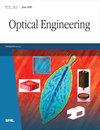中波红外和长波红外场景对比温度比较
IF 1.2
4区 工程技术
Q4 OPTICS
引用次数: 0
摘要
摘要。发射型红外成像仪设计的主要工作之一是决定在应用中使用中波红外(MWIR)还是长波红外(LWIR)。其应用包括目标捕获(目标搜索和目标识别)、威胁预警、飞机探测和领航。在描述中波红外与长波红外目标特征方面已经做了大量工作。但在场景(有时也称为背景)对比度特征描述方面的工作要少得多。背景的场景对比度对传感器在应用中的性能同样重要。以下是几个例子(1) 高场景对比度和高杂波对比度会大大增加目标搜索的难度;(2) 高场景对比度和基于图像的导航可以提高位置估计的性能;(3) 高场景对比度和机动性传感器可以提高旋翼机引航系统的飞行性能。我们讨论了在中波红外波段和低波红外波段之间观察到的场景对比度差异。这为发射型红外应用提供了场景对比度特征。在各种环境中使用中波红外和长波红外摄像机获取辐射校准图像,并对测量的中波红外和长波红外场景对比度进行比较。辐射度比较以场景等效黑体温度的标准偏差进行。比较在不同条件下进行,如农村与城市、白天与夜晚。这种比较使红外系统设计人员能够进行详细的工程设计。本文章由计算机程序翻译,如有差异,请以英文原文为准。
Comparison of scene contrast temperature in mid-wave infrared and long-wave infrared
Abstract. One of the primary activities in emissive infrared imager design is the trade on whether to use midwave infrared (MWIR) or longwave infrared (LWIR) in the application. Applications include target acquisition (both target search and target identification), threat warning, aircraft detection, and pilotage. There has been a great deal of work in the characterization of MWIR versus LWIR target signatures. There has been much less work in the characterization of scene (sometimes called background) contrast. The scene contrast of the background can be just as important in the performance of the sensor in an application. A few examples are: (1) a high scene contrast with high clutter contrast can make target search much more difficult, (2) a high scene contrast with image-based navigation can enhance the performance of location estimation, and (3) high scene contrast with mobility sensors can enhance the flying performance of a rotorcraft pilotage system. We discuss the differences observed in scene contrast between MWIR and LWIR bands. This provides a scene contrast characterization for emissive infrared applications. Radiometrically calibrated imagery is acquired with MWIR and LWIR cameras in various environments, and the measured MWIR and LWIR scene contrast is compared. The radiometric comparison is performed in terms of the standard deviation of the scene equivalent blackbody temperature. Comparisons are provided under different conditions, such as rural versus urban and day versus night. This comparison enables the infrared system designer with the means to perform detailed engineering trades.
求助全文
通过发布文献求助,成功后即可免费获取论文全文。
去求助
来源期刊

Optical Engineering
工程技术-光学
CiteScore
2.70
自引率
7.70%
发文量
393
审稿时长
2.6 months
期刊介绍:
Optical Engineering publishes peer-reviewed papers reporting on research and development in optical science and engineering and the practical applications of known optical science, engineering, and technology.
 求助内容:
求助内容: 应助结果提醒方式:
应助结果提醒方式:


